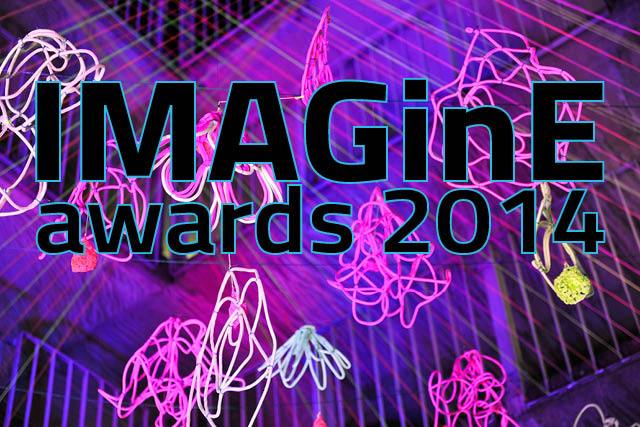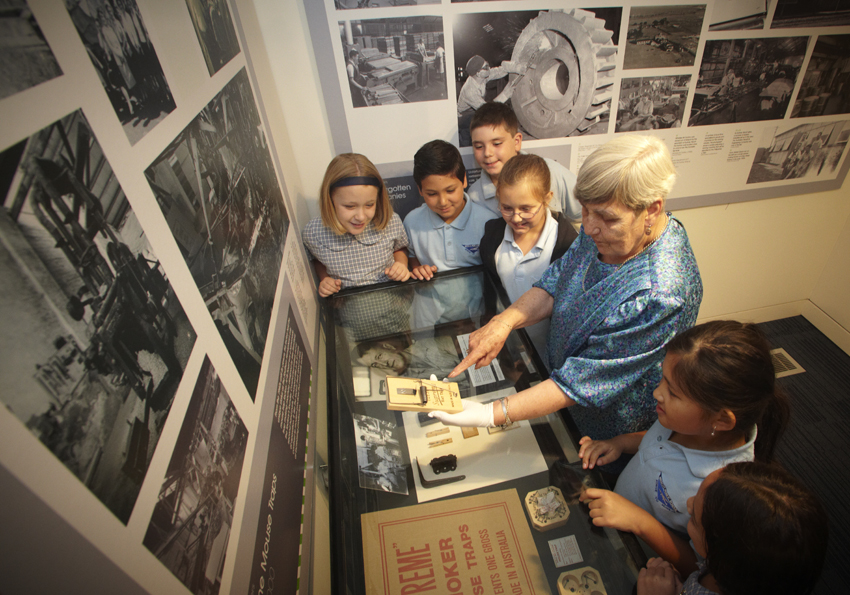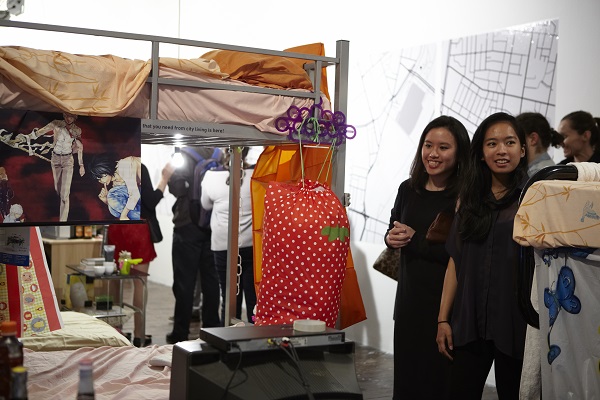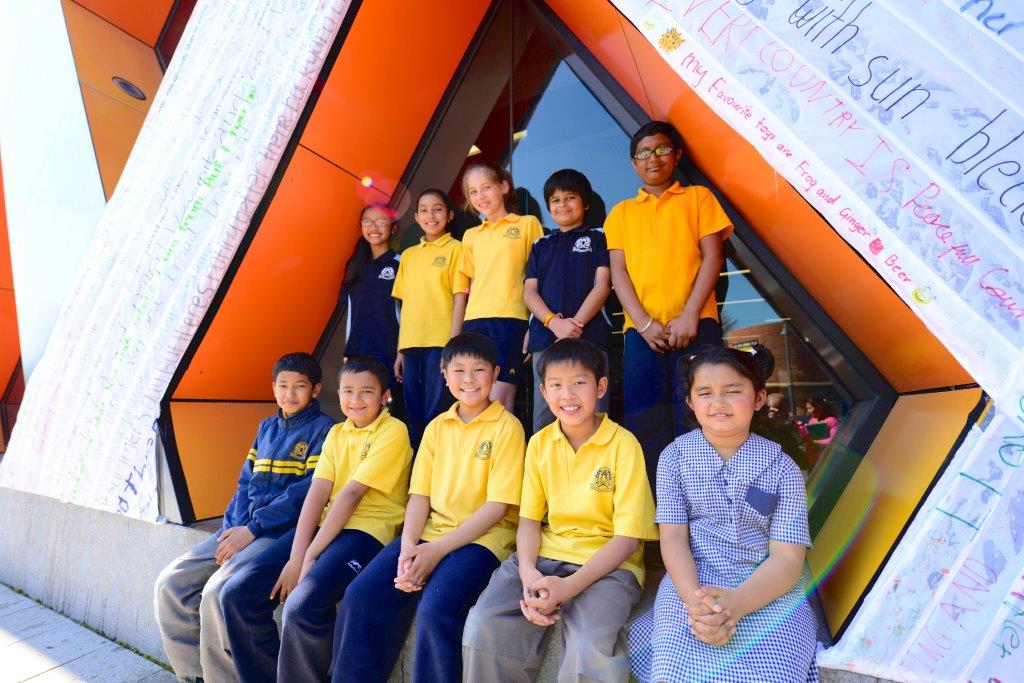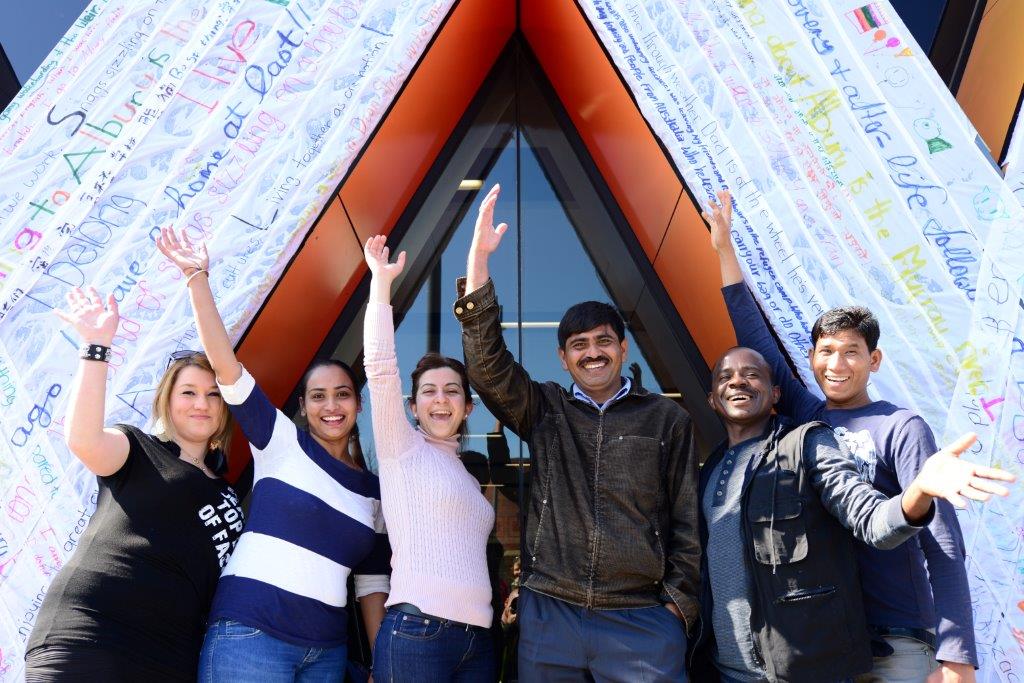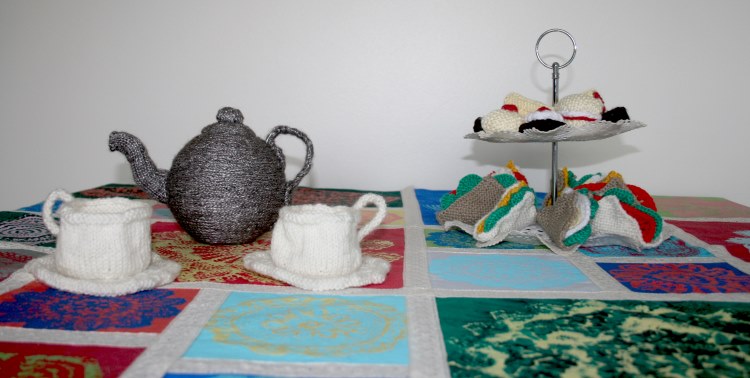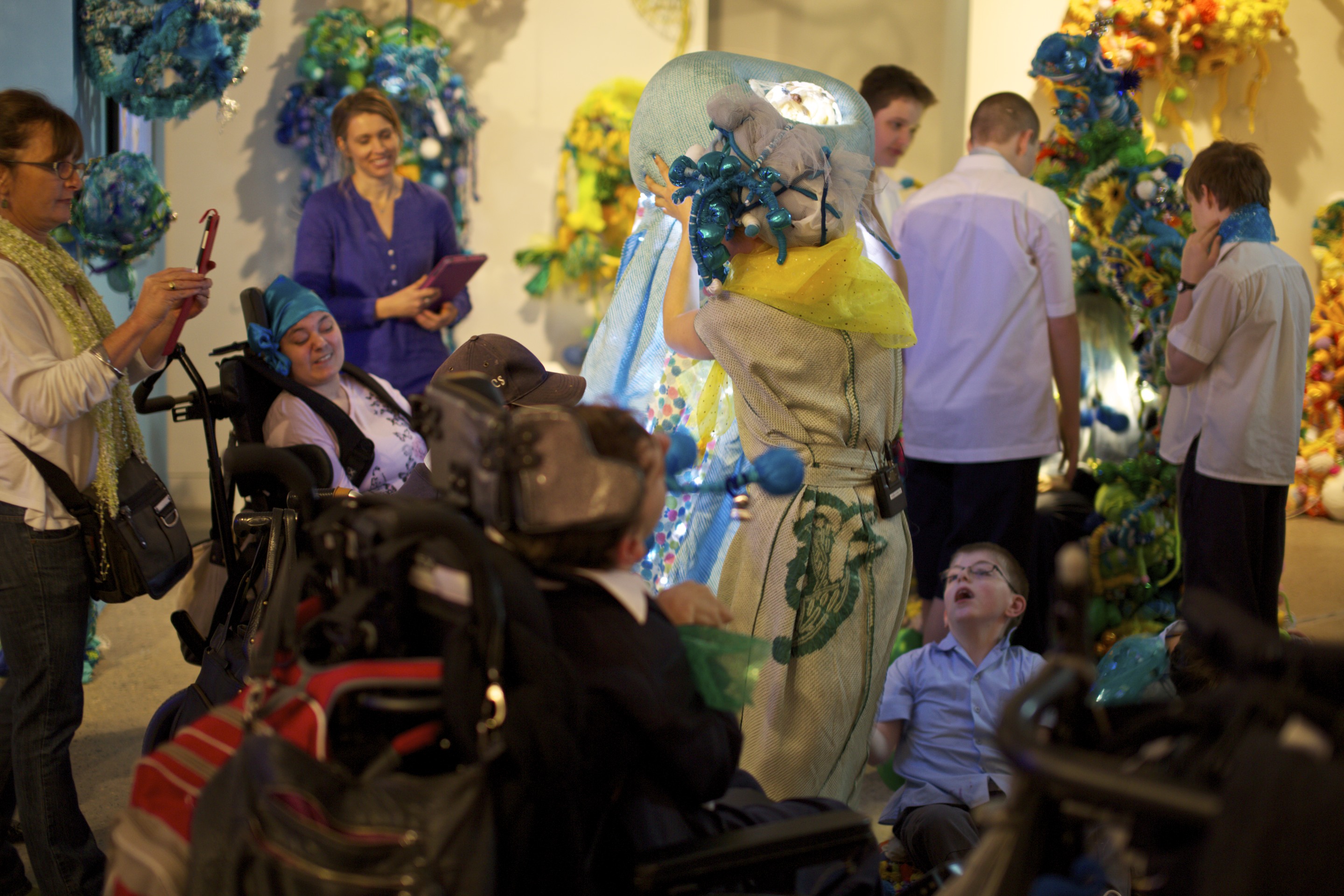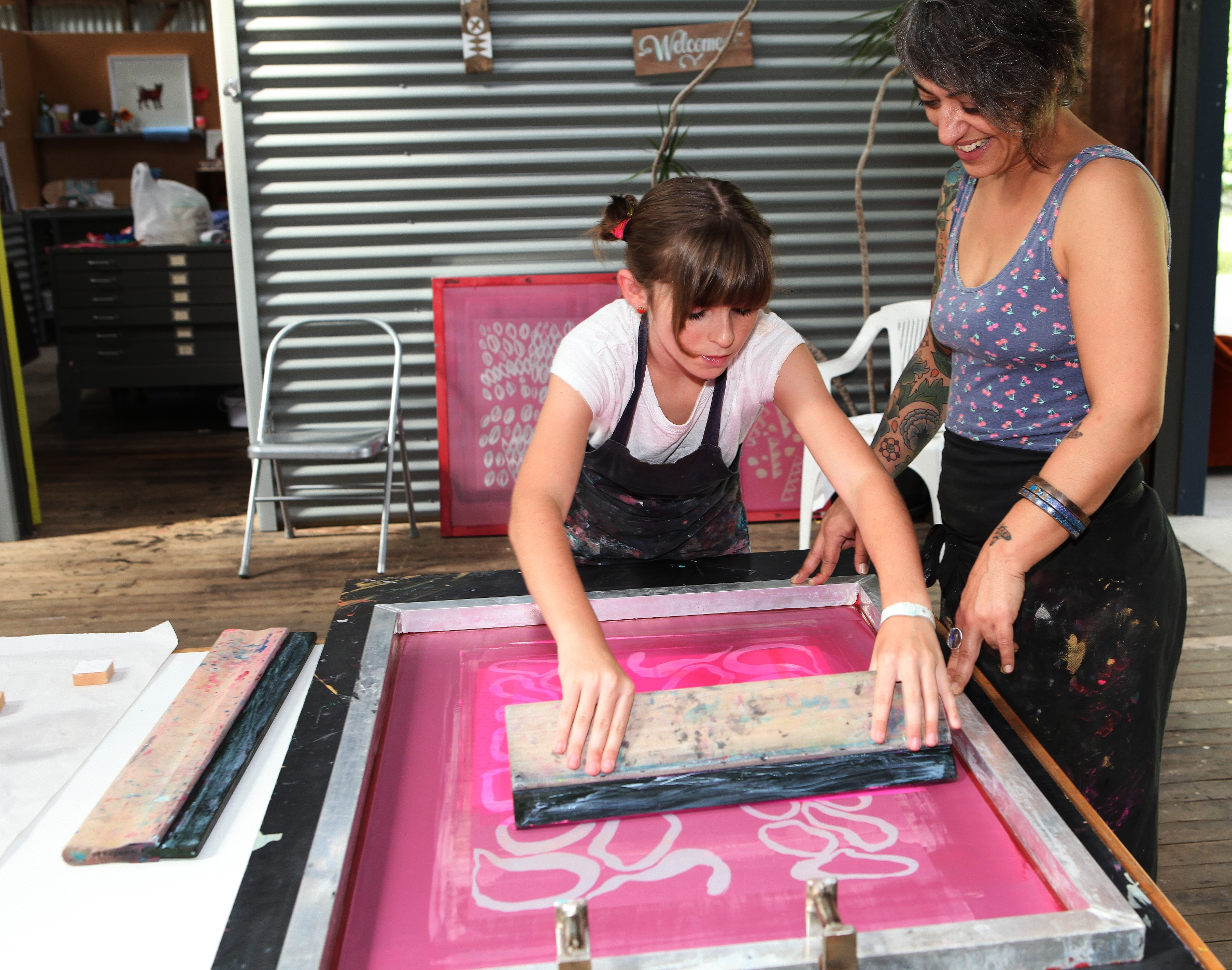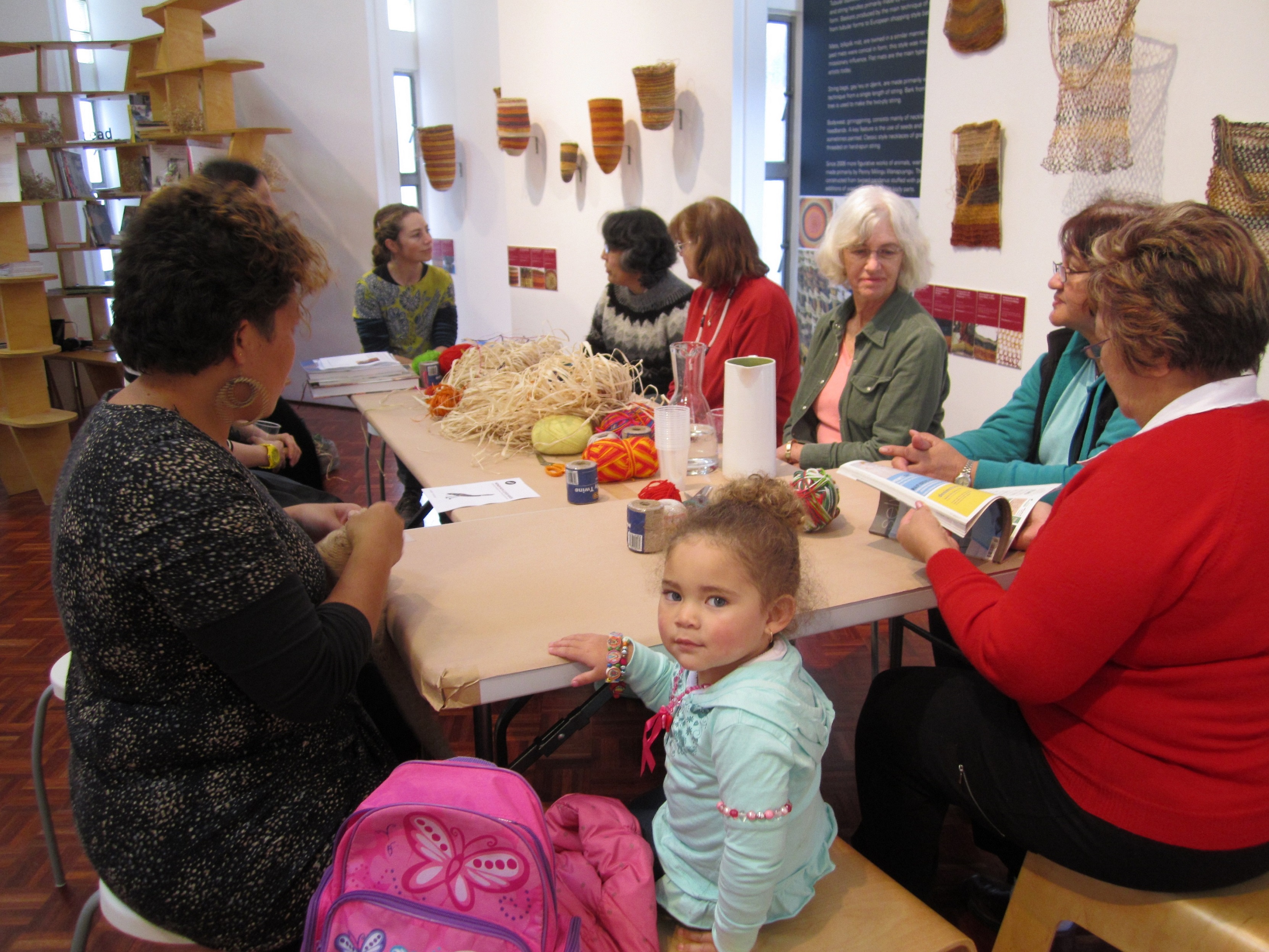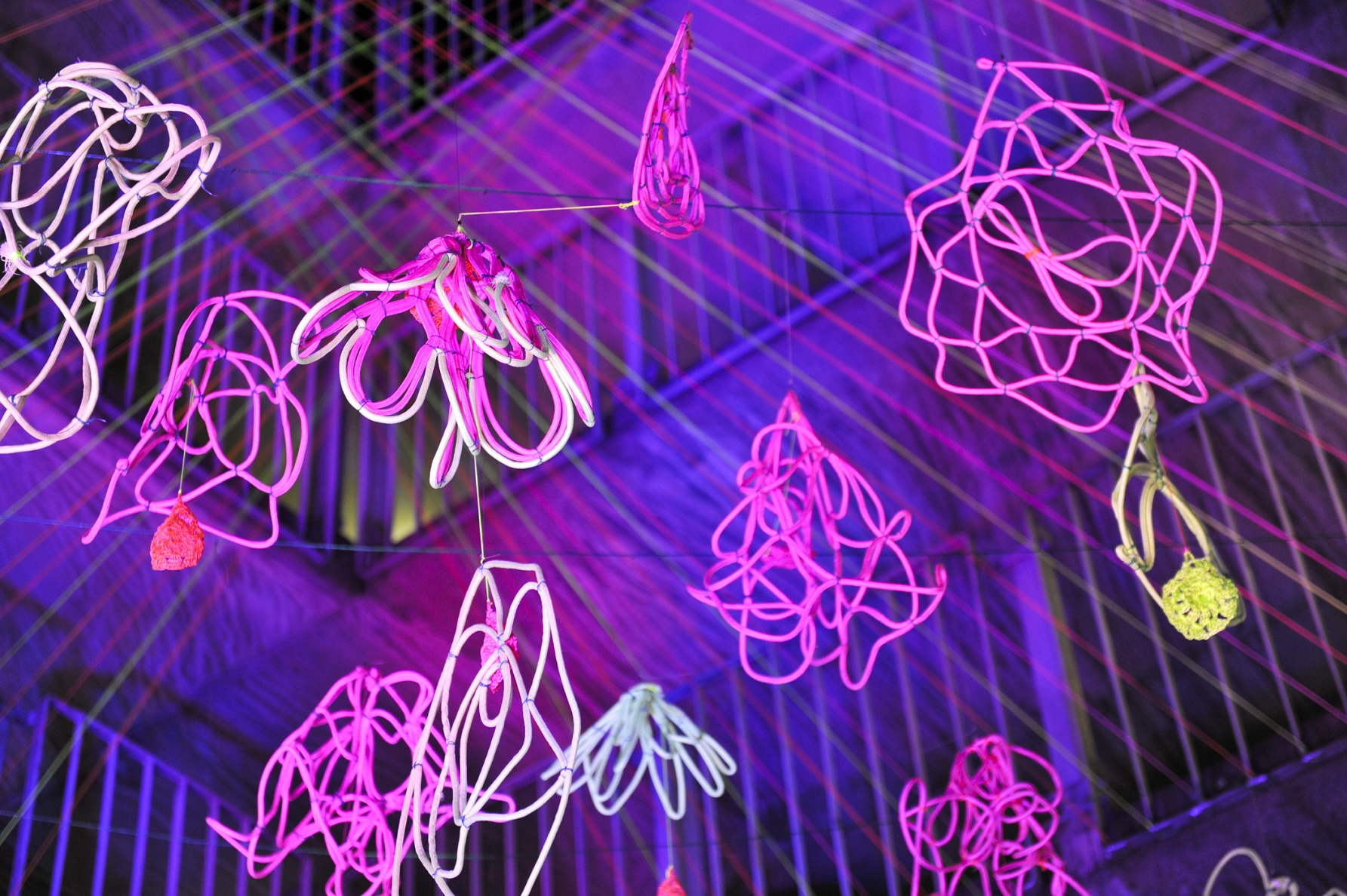Engagement: 3-10 paid staff
Click here to view all 2014 IMAGinE winners and highly commended organisations!
WINNER – 4A Centre for Contemporary Asian Art: Vertical Villages
Vertical Villages was a collaborative partnership between Ruangrupa ArtLab (Indonesia), Keg de Souza (Australia) and 4A Centre for Contemporary Asian Art, working with international tertiary student population living in Sydney’s CBD and communities in Jakarta. Vertical Villages was comprised of: artist-led community workshops: the creation of collaborative new works: dual exhibitions at 4A and in Jakarta as part of the 15th Jakarta Biennale: public programs curated by community groups and students: and a project blog and print publication.
Speaking with international students and young migrant workers in Sydney’s Haymarket and CBD, 4A identified the need to better understand the complex issues of housing density, social isolation and various types of exploitation experienced by the group. The exhibition outcomes were pitched to general audiences, while the series of public programs were designed to encourage participants to adapt and re-purpose 4A as a site for their own social activities and creative experiments, such as the House Party series. Events included a Hot Pot communal dinner party and a large gathering from the Thai Students’ Association who held a night of live Thai pop music.
Vertical Villages represented a unique and process-driven experiment with innovative outcomes that bolstered the profile of Australian contributions and connections to the arts across South East Asia. This experience will stand 4A in excellent stead for future engagement with Indonesian contemporary artists and cultural dialogue activities.
HIGHLY COMMENDED – UTS ART Education: UTS Art Collection Indigenous art and creative writing program
The program is targeted at primary and Indigenous high school students, and adult learners from Indigenous backgrounds attending local TAFE colleges. There are several aims: to build aspiration for tertiary study: to introduce the Indigenous art within the UTS Collection: to showcase the range of practice in contemporary Indigenous artmaking: to raise awareness of Jumbunna and the strong Indigenous presence at UTS: and to increase literary and communication skills in an enjoyable and creative environment.
This program revolves around a selection of contemporary artwork made by Indigenous artists held in the University of Technology (UTS) Art Collection. Participants explore the work on display at the Jumbunna House of Learning, and in conversation with UTS staff discuss its heritage, meaning and aspects of creation. This is followed by a creative writing or zine making workshop led by Richard Short, Sydney Story Factory (SSF) who continues to support students as they write and respond to the artworks. The resultant works are featured on the UTS website as part of a complementary online resource.
In 2015 the program is being employed as a teaching aid for the new Bachelor of Primary Health for Indigenous students, currently under development at UTS. It will be used to build confidence and increase the communication capacity of students who will eventually deliver similar skill development workshops in their remote communities. The program is also an important tool in teaching non-Indigenous UTS Health Sciences’ students about Indigenous culture.
This program demonstrates the way in which UTS Art Education is refocusing art education to address local community problems and issues.
Albury LibraryMuseum: Confluence
Australian Voices (an Albury LibraryMuseum project) engaged artists Glen Clarke and Bronwyn Cossor to develop a public and community artwork, Confluence. The artists worked with community groups including the Albury & District Historical Society, recently arrived refugees and migrants, former residents of the Bonegilla Migrant Centre, Aboriginal secondary students and primary school students to develop the public artwork to represent their stories of ‘belonging’ in Albury. The project was launched at the opening of Write around the Murray (WAM) Festival 2013.
In a series of community workshops, participants were asked to write about belonging on large strips of fabric and as those stories unfolded they were sound recorded. The artists and volunteers sewed the fabric together to shroud the notable X façade of the LibraryMuseum building. Working with the idea behind the X, which signifies Albury as a crossing place – of river, of state, and an important site for the traditional owners of the land – the fabric and sound installation replicated the interweaving of personal lives and histories of this diverse community. WAM festival visitors were encouraged to add their own stories of belonging to Confluence as part of the project’s public programming.
Confluence was highly successful and involved over 200 participants. Confluence empowered newly arrived migrants and refugees to participate more fully in their local community. The project also deepened the understanding of the diversity in cultures in Albury, with a view towards increasing tolerance within the general community.
Bathurst Regional Art Gallery: HEAVY METAL
The HEAVY METAL: Sculpture from the Permanent Collection Online Education Kit is an example of the innovative and scholarly exhibition resources designed and produced by BRAG.
HEAVY METAL originated from an exhibition showcasing predominately metal, abstract sculpture from BRAG’s small sculpture collection. The exhibition panels presenting information about the sculptures and their makers wove a narrative traversing the growth of sculpture in Australia post 1960s. The online education kit explored these narratives using a gallery-based activity station.
Primarily designed for primary and secondary teachers and students, the education kit’s audience extends to general gallery patrons as a tool to enhance engagement and appreciation of the collection.
The HEAVY METAL kit provides interconnectivity between 20 artist profiles, a glossary, and offers the ability to tap into rich global multi-media, linking artists’ websites, international museum collections and videos of artist interviews. This shift from linear documents to media rich, interconnected interfaces represents a significant leap towards meeting the growing technological demands of classrooms.
Chifley Home and Education centre: Distant Connections
The Distant Connections project is a collaboration that places Chifley Home as pivotal in two subjects in the Bachelor of Teaching (Secondary Visual Arts) at Charles Sturt University (CSU).
The first subject considers ways in which museums can be utilised as a public learning space, and students apply this understanding to similar sites within their own communities and to develop customised resources for that site. A second subject allows students to further explore this methodology, providing historical and contextual interpretation, and developing artworks for an exhibition held at Chifley Home. The tertiary curriculum was collaboratively developed in 2012 and 2013 and implemented in 2013.
In its first iteration, students engaged with the Chifley Home by researching the collection and the narrative of the site, creating art-based responses that were documented in digital diaries and shared in a virtual classroom site. Members of the project team contributed to the virtual classroom by providing ongoing support and expertise culminating in Distant Connections exhibited at Chifley Home Education Centre.
High levels of student engagement is demonstrated by the quality of the artworks, the accompanying exhibition catalogue, with formal university online student evaluations indicating record levels of satisfaction.
Highlighting the potential of collaboration and the importance of addressing the educational possibilities within museums, the program has been presented at various national and international education conferences; the National Visual Arts Education Conference; the NSW Secondary Principals conference; the Practice-Based Education Summit; and the International Congress for the International Society for Education in the Arts.
Grafton Regional Gallery: Arts in Mind program
Arts in Mind offers people living with dementia and their carers regular opportunity to participate in art and culture, promoting social inclusion and providing intellectual stimulation.
The group meets monthly at the regional gallery for a guided tour and morning tea, focusing on encouraging communication and connection through stimulation and, importantly, providing carers opportunity to create networks and develop support from members of the wider community.
The program’s success is in part due to its role as art therapy for people living with dementia. It is theorised that looking at art activates brain systems that are preserved which in turn connects with other cerebral areas, resulting in global stimulation of the brain. Researchers have seen an amelioration of depressive symptoms, improved cognition and increased sociability among those participating in these programs.
From July 2013 to June 2014 the project catered for 245 visitors from the Clarence Valley area; a group made up of clients with mild to moderate stages of dementia, and their carers who are usually family members.
Hazelhurst Regional Gallery & Arts Centre: Art Magic
The Art Magic project was developed by artist Hiromi Tango in association with Hazelhurst Regional Gallery and culminated in the 2013 exhibition Hiromi Hotel: Moon Jellies. The exhibition resulted from extensive community engagement; and using the ocean’s ecosystem as a metaphor for the brain, explored the healing power of art using textiles and the meditative process of wrapping.
Prior to the exhibition, Tango trained Hazelhurst teachers and volunteer guides to conduct the Art Magic workshops with local community groups. The workshops focused on the creative process required to make parts of Hiromi’s major under water inspired installation. As resources, Hazelhurst produced an instructive educational video and an instructive education handbook of the artist demonstrating these techniques.
Over 20 community groups and 250 participants were involved in producing the work. The Art Magic workshop program involved a wide range of groups, including school groups, special needs, aged care institutions, and individuals. Participating groups visited the exhibition to view their contributions, experience the installation, and were encoraged to sit, touch and physically connect with art works.
Lismore Regional Gallery: Duo: learning the ropes
Duo: learning the ropes was a creative-exchange and exhibition development project developed by Lismore Regional Gallery (LRG). The program involved five established local artists as mentors to work one-on-one in the studio with five young people whose works formed the basis of the exhibition at LRG.
Aiming to develop and maintain studio practices for young people, Duo involved artist run workshops focusing on skill development and skill sharing. Each Duo participant spent 20 hours studio time with their mentor artist drawing, screen-printing, designing and etching. In conjunction with the Duo participants and Roundabout Theatre, LRG hosted school holiday activities for over 200 young people and families.
Duo: learning the ropes was curated and managed by Claudie Frock, LRG Learning Officer. Frock selected five local artists: Christine Willcocks, Michelle Dawson, Joanna Kambourian, Michael Moynihan and Jesse Mackintosh according to their location, medium and preparedness to work with young people.
Duo’s success has led to a 2015 partnership project with Youth Connections North Coast (YCNC) and Southern Cross University to work with young people as part of YCNC’s after school program. Duo artist Mic Moynihan will lead young people in developing photographic skills for an exhibition at LRG in June 2015.
Mosman Art Gallery: Mosman Art Prize
The annual acquisitive Mosman Art Prize is Australia’s oldest, longest-running and most prestigious local government painting award, with the major prize of $30,000. Established in 1947 by artist and architect Allan Gamble, the Mosman Art Prize is an integral part of cultural life of Mosman and the wider visual arts community. The resulting collection is an important asset in the documentation of Australian art history, which at times has created controversy, incited debate and contributed to a range of critical discourses amongst curators, scholars and academics as well as the general populace.
In recent years the exhibition of selected finalists has become more representative of contemporary Australian culture, receiving submissions from Aboriginal and culturally and linguistically diverse artists. It has played and continues to play an important role in increasing public awareness and understanding of Australia’s visual arts, and it is this pioneering role and spirit of support for artists and the visual arts community, which is celebrated annually through its exhibition.
Today the Prize is coordinated and curated by industry professionals and continues as the Mosman Art Gallery’s flagship exhibition, attracting over 800 artist entries annually, with audiences regularly exceeding over 9,000 visitors during its six week period of display.
New England Regional Art Museum: TALKING WITH TREES
TALKING WITH TREES – a Smart Tree installation was a joint project of New England Regional Art Museum and North Western Regional Science Hub to celebrate National Science Week in August 2013.
Artists Jonathan Larsen and Benjamin Thornn led the construction of a large tree from recycled cardboard boxes featuring interactive sounds triggered by pressure pads. Visitors were encouraged to interact with the work by contributing their own creative touches to the tree, allowing the tree to ‘grow’.
The project engaged school children in both art and science and aimed to develop understanding that creativity is critical in both fields. The initial construction began with a workshop involving the Catalyst Club, a children’s science club. Participants, led by botanist David Carr, considered the environmental factors affecting living trees and then, using various construction techniques to build the branches of the cardboard tree with the project artists.
Once the tree’s structure had been completed gallery visitors had the opportunity to interact with the installation as if it was a living, growing entity.
Inside the tree, six different sounds – sap flow, leaves in the wind and animal and bird sounds – were triggered by pressure pads on the floor making it possible to create a soundscape. Visitors could evaluate and manipulate cause and effect by discovering how each sound was triggered. Three iPads provided further interaction by linking to local tree monitoring equipment, allowing real-time viewing of data and providing opportunity to comment and reflect on the science of trees.
Parramatta Artist Studios: WeAve
WeAve, an initiatve of Parramatta Artists Studios, connects diverse contemporary artists with community makers through textile and fibre art, with a focus on contemporary practice inspired by cultural traditions. Taking the form of a monthly workshop, WeAve gives participants the opportunity to make work, visit exhibitions, attend talks and connect with Australian culture. The WeAve group also participates in festivals and community events though workshops and saleable items made by WeAve members.
WeAve provides an opportunity for participants from diverse cultural backgrounds to reconnect with their cultural roots within a contemporary framework. The group aims to remember and honour culture and traditions, learn and share techniques and activate the community.
WeAve applies not only to the making of craft but also to the weaving of people and communities.
Trial Bay Gaol: Trail Bay Gaol Interpretive Program
In partnership with the Dunghutti community, the Trail Bay Gaol Interpretive Program uses numerous interpretive methods to engage a wide cross-section of visitors and partners, and demonstrates the National Parks and Wildlife Service’s ‘landscape approach’ to managing cultural and natural heritage.
There were several key contributors to the project. The Smoky Cape Range Aboriginal Oral History project collected stories and sourced artwork for use in interpretative signs, while the Kids in Parks program involved children in site maintenance and the repair of interpretive props. This program, developed in response to feedback from local schools was funded by the Office of Environment and Heritage. 200 schoolchildren enjoyed mini tours at Trial Bay following the ‘Now and Then’ social studies theme, in addition to the long-standing Discovery Schools programs.
Research undertaken by the Friends of Trial Bay Gaol was fundamental in developing several life sized figures as interpretive mechanisms for the inmates’ stories. The newly installed Flogging Triangle demonstrates the harsh punishments associated with prison life.
The Sculpture in the Gaol event attracted 1,000 visitors per week, 900 of whom attended the Open Day. School entries have increased annually and last year the event received 15 student submissions, in turn encouraging families and their friends to attend.
Trail Bay Gaol also partnered with cultural, social, sporting and recreational groups to attract new visitors to the Gaol. The annual triathlon and marathon brought hundreds of spectators to the gaol and helped generate new audiences by showcasing the site for those seeking artistic, theatrical interests and sporting venues.

